今天,我们开始Springboot的Web开发
简介
使用SpringBoot:
1)、创建SpringBoot应用,选中我们需要的模块;
2)、SpringBoot已经默认将这些场景配置好了,只需要在配置文件中指定少量配置就可以运行起来.
3)、自己编写业务代码;
想要使用SpringBoot的自动配置的功能,我们必须熟知SpringBoot的自动配置的原理。
自动配置原理
这个场景SpringBoot帮我们配置了什么?能不能修改?能修改哪些配置?能不能扩展?xxx
自动配置原理,一般我们需要看:spring-boot-autoconfigure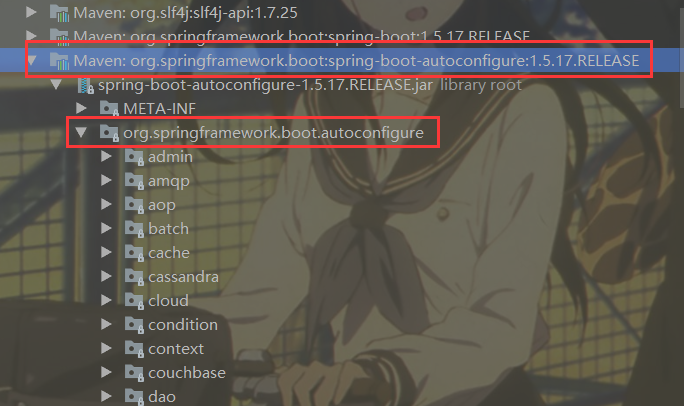
然后再看我们想要的模块里面的:
xxxxAutoConfiguration: 帮我们给容器中自动配置组件;
xxxxProperties: 配置类来封装配置文件的内容;
比如:Web模块,看:DispatchServletAutoConfiguration
SpringBoot对静态资源的映射规则
创建我们的今天的Web项目:(添加Web模块)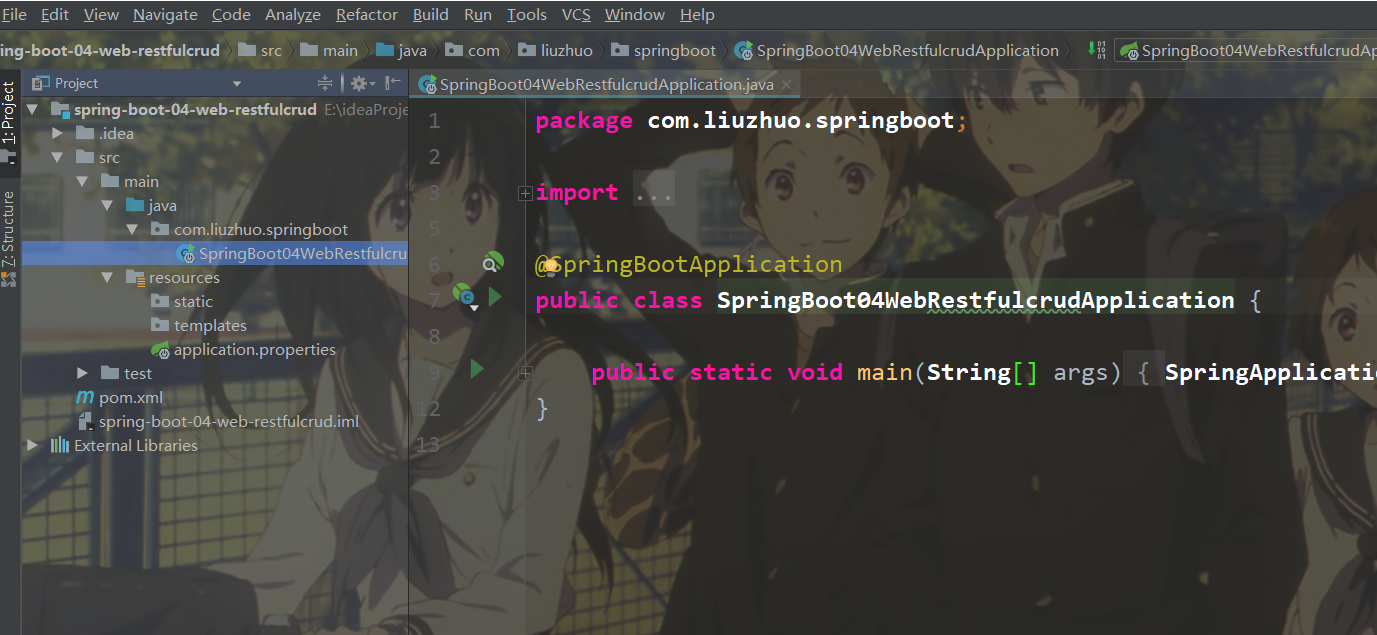
在:spring-boot-autoconfigurejar 下:
web下的 WebMvcAutoConfiguration:专门为我们配置了默认的Web应用的配置: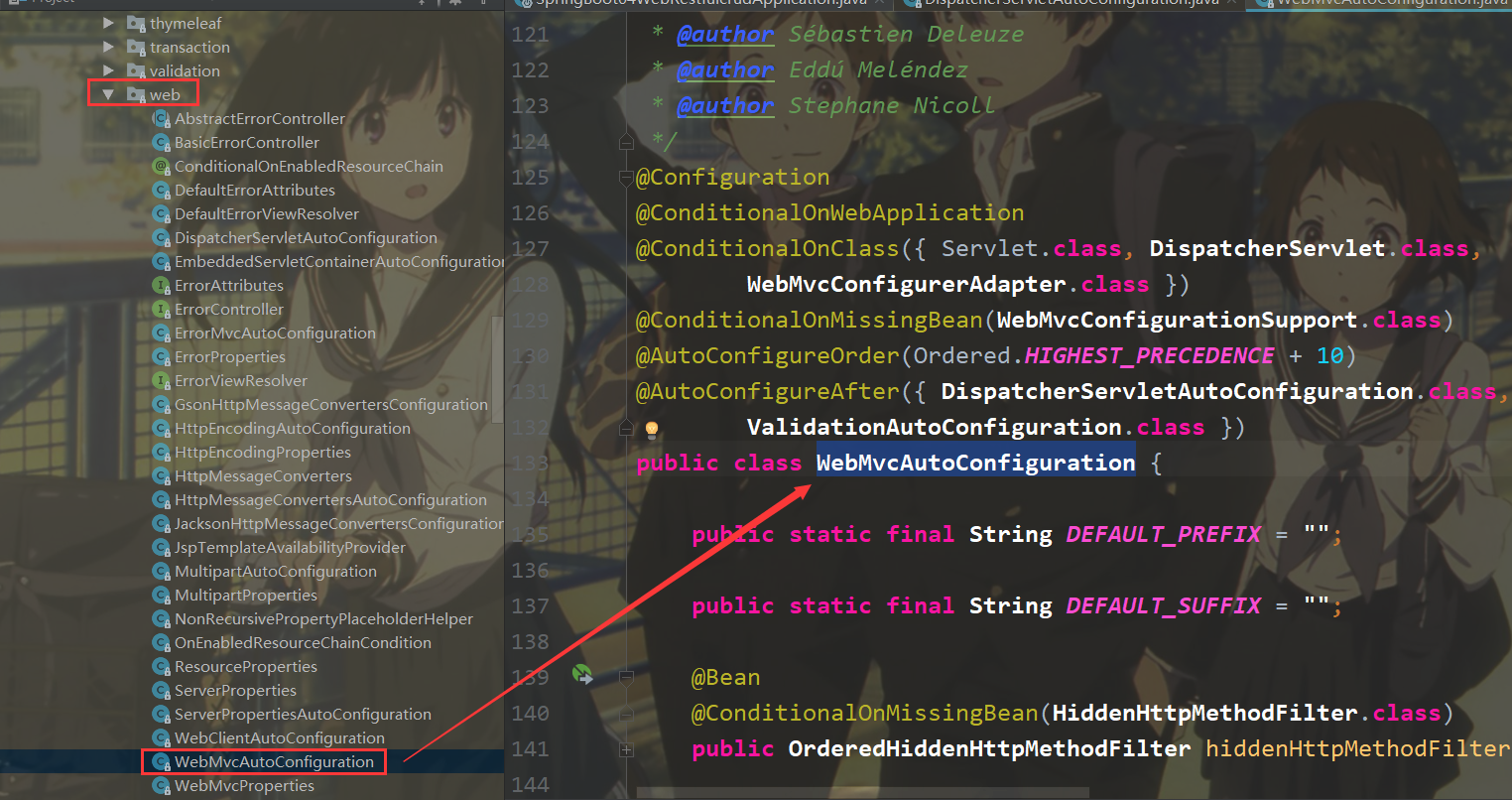
设置:静态资源的相关配置的类:
@ConfigurationProperties(prefix = "spring.resources", ignoreUnknownFields = false)
public class ResourceProperties implements ResourceLoaderAware, InitializingBean {
private static final String[] SERVLET_RESOURCE_LOCATIONS = { "/" };
private static final String[] CLASSPATH_RESOURCE_LOCATIONS = {
"classpath:/META-INF/resources/", "classpath:/resources/",
"classpath:/static/", "classpath:/public/" };
private static final String[] RESOURCE_LOCATIONS;
static {
RESOURCE_LOCATIONS = new String[CLASSPATH_RESOURCE_LOCATIONS.length
+ SERVLET_RESOURCE_LOCATIONS.length];
System.arraycopy(SERVLET_RESOURCE_LOCATIONS, 0, RESOURCE_LOCATIONS, 0,
SERVLET_RESOURCE_LOCATIONS.length);
System.arraycopy(CLASSPATH_RESOURCE_LOCATIONS, 0, RESOURCE_LOCATIONS,
SERVLET_RESOURCE_LOCATIONS.length, CLASSPATH_RESOURCE_LOCATIONS.length);
}
·····
//可以设置和静态资源有关的参数,缓存时间等
设置静态资源映射的默认方法:
@Override
public void addResourceHandlers(ResourceHandlerRegistry registry) {
if (!this.resourceProperties.isAddMappings()) {
logger.debug("Default resource handling disabled");
return;
}
Integer cachePeriod = this.resourceProperties.getCachePeriod();
if (!registry.hasMappingForPattern("/webjars/**")) {
customizeResourceHandlerRegistration(registry
.addResourceHandler("/webjars/**")
.addResourceLocations("classpath:/META-INF/resources/webjars/")
.setCachePeriod(cachePeriod));
}
String staticPathPattern = this.mvcProperties.getStaticPathPattern();
if (!registry.hasMappingForPattern(staticPathPattern)) {
customizeResourceHandlerRegistration(
registry.addResourceHandler(staticPathPattern)
.addResourceLocations(
this.resourceProperties.getStaticLocations())
.setCachePeriod(cachePeriod));
}
}
webjars静态资源映射规则
所有 /webjars/** ,都去 classpath:/META-INF/resources/webjars/ 找资源
webjars:以jar包的方式引入静态资源.
例子:引入jQuery的静态资源。
打开webjars官网,找到jQuery的Maven配置信息: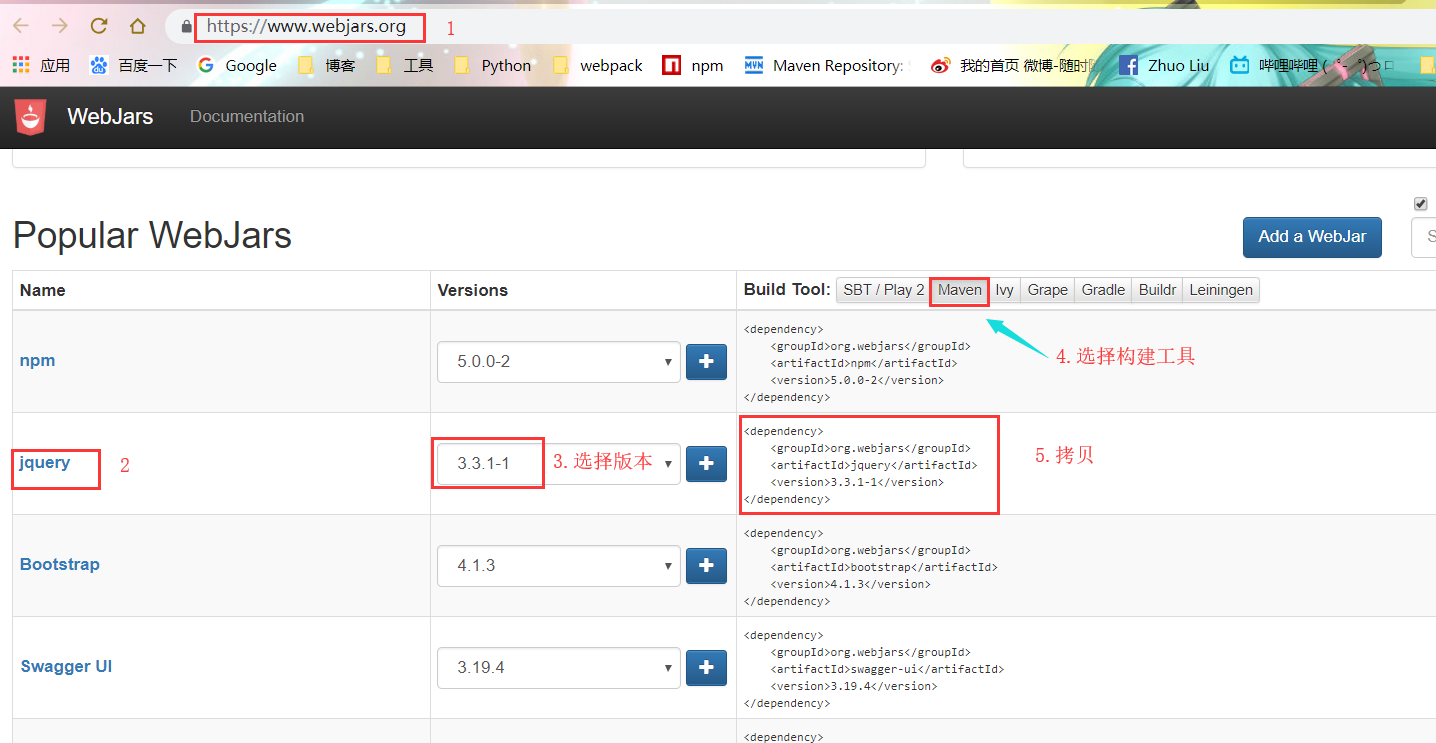
将拷贝的jQuery的Maven配置,导入到我们的项目中。
<dependency>
<groupId>org.webjars</groupId>
<artifactId>jquery</artifactId>
<version>3.3.1-1</version>
</dependency>
在我们的依赖jar中,找到jQuery的依赖: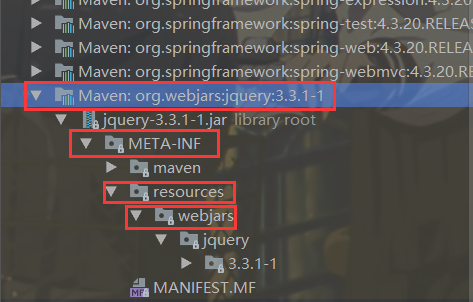
发现,这个依赖的jar的目录格式,也是 classpath:/META-INF/resources/webjars/
启动我们的项目:
在浏览器中输入:http://localhost:8080/webjars/jquery/3.3.1-1/jquery.js
webjar的静态资源访问成功!
静态资源的映射原理
/** 访问当前项目的任何资源,都去(静态资源的文件夹)找映射
String staticPathPattern = this.mvcProperties.getStaticPathPattern();
if (!registry.hasMappingForPattern(staticPathPattern)) {
customizeResourceHandlerRegistration(
registry.addResourceHandler(staticPathPattern)
.addResourceLocations(
this.resourceProperties.getStaticLocations())
.setCachePeriod(cachePeriod));
}
这里,注册了 staticPathPattern 和 this.resourceProperties.getStaticLocations() 的静态资源访问。
点击:staticPathPattern:private String staticPathPattern = "/**";
点击:getStaticLocations():
private static final String[] CLASSPATH_RESOURCE_LOCATIONS = {
"classpath:/META-INF/resources/", "classpath:/resources/",
"classpath:/static/", "classpath:/public/"
};
对于:/** 的静态资源的访问。
会到以下的路径寻找静态资源:
“classpath:/META‐INF/resources/“,
“classpath:/resources/“,
“classpath:/static/“,
“classpath:/public/“
这里的”classpath”:就相当于我们项目的java、resources目录。
印证我们的默认的静态资源访问:
在以上的目录中随意放一张照片: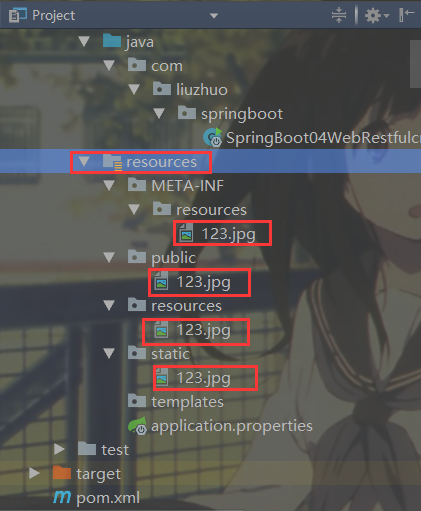
三张,不同的照片,但是名字都是123.jpg的照片。
启动项目,在浏览器中输入:http://localhost:8080/123.jpg

出现的是”META-INF/resources”下的123.jpg照片。
删除”META-INF/resources”下的123.jpg照片. 再次访问是”classpath:/resources/“下的123.jpg
依次类推:再是”classpath:/static/“、”classpath:/public/“。
优先级是:从上到下,依次递减欢迎页: 静态资源文件夹下的所有index.html页面;被”/**”映射
@Bean
public WelcomePageHandlerMapping welcomePageHandlerMapping(
ResourceProperties resourceProperties) {
return new WelcomePageHandlerMapping(resourceProperties.getWelcomePage(),
this.mvcProperties.getStaticPathPattern());
}
getWelcomePage():
private String[] getStaticWelcomePageLocations() {
String[] result = new String[this.staticLocations.length];
for (int i = 0; i < result.length; i++) {
String location = this.staticLocations[i];
if (!location.endsWith("/")) {
location = location + "/";
}
result[i] = location + "index.html";
}
return result;
}
getStaticPathPattern():
private String staticPathPattern = "/**";
即对: /** 的访问。SpringBoot会自动到刚刚我们的提到的静态资源的文件夹下找index.html的页面
localhost:8080/ 找index页面
所有的 **/favicon.ico 都是在静态资源文件下找
@Bean
public SimpleUrlHandlerMapping faviconHandlerMapping() {
SimpleUrlHandlerMapping mapping = new SimpleUrlHandlerMapping();
mapping.setOrder(Ordered.HIGHEST_PRECEDENCE + 1);
mapping.setUrlMap(Collections.singletonMap("**/favicon.ico",
faviconRequestHandler()));
return mapping;
}
模板引擎
JSP、Velocity、Freemarker、Thymeleaf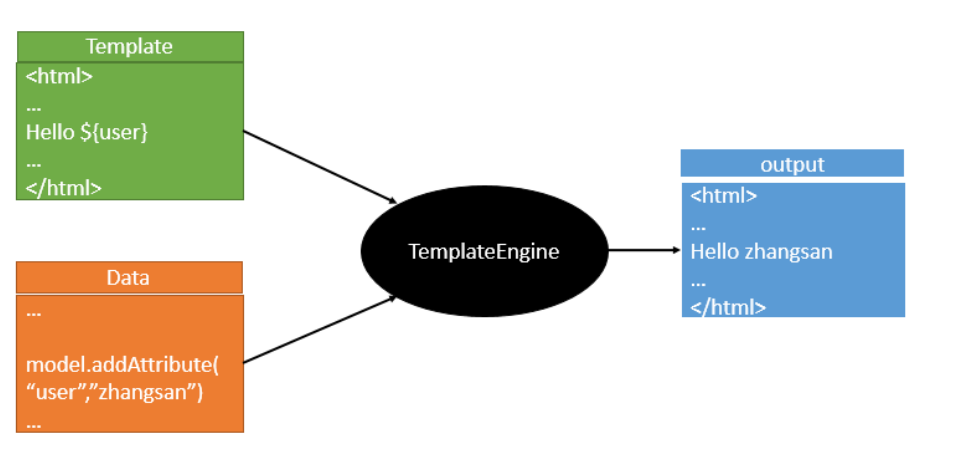
Springboot默认是不支持jsp模板引擎的,因为SpringBoot是打成jar包,使用嵌入式的Tomcat容器。
这里,我们使用SpringBoot官方推荐的 Thymeleaf 模板引擎。语法更简单,功能更强大。
引入thymeleaf
<!-- Springboot默认是:2.1.6 的版本 -->
<dependency>
<groupId>org.springframework.boot</groupId>
<artifactId>spring‐boot‐starter‐thymeleaf</artifactId>
</dependency>
<!-- 切换thymeleaf版本 -->
<properties>
<thymeleaf.version>3.0.9.RELEASE</thymeleaf.version>
<!‐‐ 布局功能的支持程序 thymeleaf3主程序 layout2以上版本 ‐‐>
<thymeleaf‐layout‐dialect.version>2.2.2</thymeleaf‐layout‐dialect.version>
</properties>
注意,SpringBoot默认导入的thymeleaf只是2.1.6的版本,如果想切换更高的版本,查看thymeleaf的github中的发行版
thymeleaf‐layout‐dialect.version:布局的版本,请注意,如果使用thymeleaf3以上的版本,那么布局的版本必须是2.0.0以上: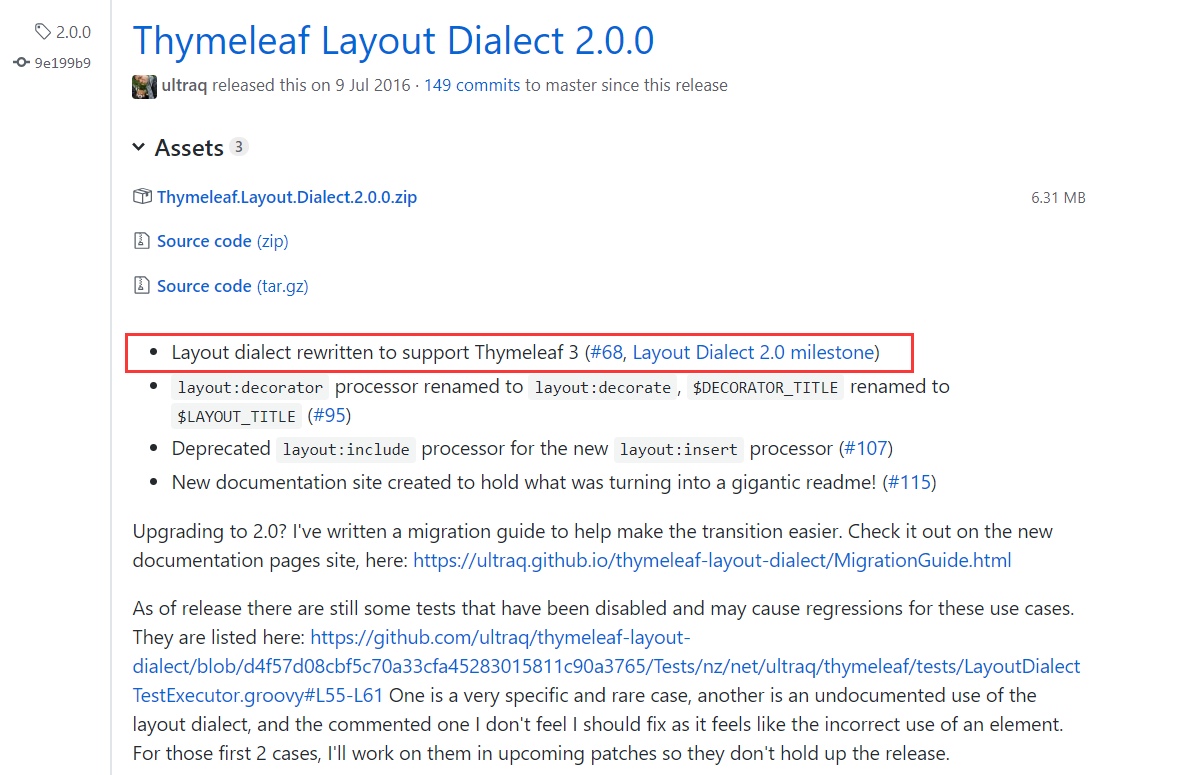
Thymeleaf使用
@ConfigurationProperties(prefix = "spring.thymeleaf")
public class ThymeleafProperties {
private static final Charset DEFAULT_ENCODING = Charset.forName("UTF‐8");
private static final MimeType DEFAULT_CONTENT_TYPE = MimeType.valueOf("text/html");
public static final String DEFAULT_PREFIX = "classpath:/templates/";
public static final String DEFAULT_SUFFIX = ".html";
//
}
Springboot默认的 themleaf 配置:
使用UTF-8字码,媒体类型:text/html,模板解析的前缀:classpath:/templates/,模板解析的后缀:.html
即:只要我们把HTML页面放在classpath:/templates/,thymeleaf就能自动渲染;
使用:
1、导入thymeleaf的名称空间:(在idea中会有相应的提示功能)
<html lang="en" xmlns:th="http://www.thymeleaf.org">
2、使用thymeleaf语法
<!DOCTYPE html>
<html lang="en" xmlns:th="http://www.thymeleaf.org">
<head>
<meta charset="UTF‐8">
<title>Title</title>
</head>
<body>
<h1>成功!</h1>
<!‐‐th:text 将div里面的文本内容设置为 ‐‐>
<div th:text="${hello}">这是显示欢迎信息</div>
</body>
</html>
语法规则
1)th:text,改变当前元素里面的文本内容。
th:任意html属性;来替换原生属性的值。
2)表达式
Simple expressions:(表达式语法)
Variable Expressions: ${…}:获取变量值;OGNL;
1)、获取对象的属性、调用方法
例如:${user.name}
2)、使用内置的基本对象:
#ctx : the context object
#vars: the context variables.
#locale : the context locale.
#request : (only in Web Contexts) the HttpServletRequest object.
#response : (only in Web Contexts) the HttpServletResponse object.
#session : (only in Web Contexts) the HttpSession object.
#servletContext : (only in Web Contexts) the ServletContext object.
例如:${session.foo}
3)、内置的一些工具对象:
#execInfo : information about the template being processed.
#messages : methods for obtaining externalized messages inside variables expressions
#uris : methods for escaping parts of URLs/URIs
#conversions : methods for executing the configured conversion service (if any).
#dates : methods for java.util.Date objects: formatting, component extraction, etc.
#calendars : analogous to #dates , but for java.util.Calendar objects.
#numbers : methods for formatting numeric objects.
#strings : methods for String objects: contains, startsWith, prepending/appending, etc.
#objects : methods for objects in general.
#bools : methods for boolean evaluation.
#arrays : methods for arrays.
#lists : methods for lists.
#sets : methods for sets.
#maps : methods for maps.
#aggregates : methods for creating aggregates on arrays or collections.
#ids : methods for dealing with id attributes that might be repeated
Selection Variable Expressions: *{…}:选择表达式:和 ${} 在功能上是一样;
补充:配合 th:object="${session.user}:
<div th:object="${session.user}">
<p>Name: <span th:text="*{firstName}">Sebastian</span>.</p>
<p>Surname: <span th:text="*{lastName}">Pepper</span>.</p>
<p>Nationality: <span th:text="*{nationality}">Saturn</span>.</p>
</div>
---------------------------等价----------------------------------------
<div>
<p>Name: <span th:text="${session.user.firstName}">Sebastian</span>.</p>
<p>Surname: <span th:text="${session.user.lastName}">Pepper</span>.</p>
<p>Nationality: <span th:text="${session.user.nationality}">Saturn</span>.</p>
</div>
其他表达式:
Message Expressions: #{...}:获取国际化内容
Link URL Expressions: @{...}:定义URL;
@{/order/process(execId=${execId},execType='FAST')}
Fragment Expressions: ~{...}:片段引用表达式
<div th:insert="~{commons :: main}">...</div>
Literals(字面量)
Text literals: 'one text' , 'Another one!' ,…
Number literals: 0 , 34 , 3.0 , 12.3 ,…
Boolean literals: true , false
Null literal: null
Literal tokens: one , sometext , main ,…
Text operations:(文本操作)
String concatenation: +
Literal substitutions: |The name is ${name}|
Arithmetic operations:(数学运算)
Binary operators: + , ‐ , * , / , %
Minus sign (unary operator): ‐
Boolean operations:(布尔运算)
Binary operators: and , or
Boolean negation (unary operator): ! , not
Comparisons and equality:(比较运算)
Comparators: > , < , >= , <= ( gt , lt , ge , le )
Equality operators: == , != ( eq , ne )
Conditional operators:条件运算(三元运算符)
If‐then: (if) ? (then)
If‐then‐else: (if) ? (then) : (else)
Default: (value) ?: (defaultvalue)
Special tokens:
No‐Operation: _



